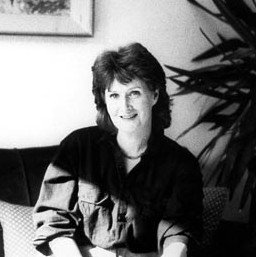Eavan Boland’s life and poetry
 Eavan Boland in 1996
Eavan Boland in 1996
Born in Dublin in 1944, Eavan Boland spent part of her childhood in London before returning to Ireland, aged 14. In England, she suffered anti-Irish discrimination: this made her interested in the tension between how we see ourselves and how we see our nation.
Her poetry looks at what ‘Irishness’ means for women. In her memoir, Object Lessons (1995), she describes herself as a young writer realising that ‘Ireland had no models for writing about being a mother, daughter, or wife’. She disliked male-dominated poetry which made women ‘ornamental’ symbols of the nation.
Eavan Boland challenged these images of women and therefore some of the assumptions made by nationalism. We might describe Boland’s mission as heroic: to write an honest account of female experience; to gain a place in her own national literature; to transform the Irish woman from object to author.
Boland’s poetry often feels cool and controlled. Many critics have compared her work to a polished gemstone. It is easy to access her low-key vocabulary and plain voice. When she first started writing, Boland soon moved past rhyme and other formal patterns in her poetry. She felt these were typical of male Irish poetry and made her feel she was ‘writing someone else’s poem’. As she matured, Boland freed her own voice. By the mid-1970s, her style was beginning to change: her voice became too strong to be contained by the neat patterns of rhyme, as we can see in a poem discussed below.
Analysing a poem by Eavan Boland: ‘The War Horse’
You could have a political murder in Irish poetry but not a baby ( Allen-Randolph, 1993)
Eavan Boland writes for those who are excluded. Her life raising children in the Dublin suburbs was not represented in the Irish poetry of her day. On top of this, northern poetry about The Troubles was gaining popularity. Boland found a lot of this poetry simplistic. She suggested the truly political poem would be more complex: it would be ‘private at source’ and show how politics seeps into our personal, domestic lives (Boland, ‘A Question’, 2000).
Aged 26, she wrote ‘The War Horse’ (1975) and later described it as ‘my first political poem’.
Trampling suburbia, the horse is a ‘rumour of war’: he maims and uproots plants ‘Like corpses’. He resembles a paramilitary ‘volunteer’.
Boland is very frank about the ‘subterfuge’ of the neighbours, and the speaker’s relief that war has passed by this time. She raises uncomfortable questions here about the part we play when hoping war will not touch us. Boland felt like an exile from the mainstream. This freed her to ask difficult questions of those at the centre of things, for example, ‘why should we care?’

Analysing a poem by Eavan Boland: ‘That the Science of Cartography is Limited’
The act of mapmaking is an act of power (‘A Question’)
For Eavan Boland, Ireland’s past was blighted by ‘wrath and grief... [and] Women were part of that wrath’ (1990). That the Science of Cartography is Limited (1994) insists history face up to the whole truth of the past, its humiliations and starvations. ‘That the Science…’ challenges the official version of Irish history as drawn on a map. Although seductive, with ‘ingenious design’ and ‘curve’, the map holds no trace of the famine road nor its harrowing truth.
Boland uses the map to make a political point: those who control memory control the story. Like Boland, we might ask, ‘if a map won’t memorialise the Famine dead, how do we know they existed?’ In writing so clearly about the forgotten, Eavan Boland restores power to them and makes a moral point. She had strong ethics and aimed always to write ‘in good faith and good poetry’. (Randolph, J.A. (ed.) (2007))
 The famine road nears its end with Rosroe just over the next brow
The famine road nears its end with Rosroe just over the next brow
Analysing a poem by Eavan Boland: ‘An Elegy for My Mother In Which She Scarcely Appears’
Womanhood and Irishness are metaphors for one another (quoted in Wilson, R. E., & Somerville-Arjat, G. (1990))
‘An Elegy for My Mother In Which She Scarcely Appears’ (2005) explores what endures over time. It suggests women and Ireland have much in common: each has been silenced and dispossessed; each has spent time being ignored or underestimated.
Typically for Boland, this poem is packed with material objects. The objects are so detailed we can ‘see’ them. For Boland, they stand for truth. She wanted to create a ‘dailiness’ in poetry, true to the reality of people’s lives. Boland brings life to kettles and clothes horses and old women: she wants to give back power to those who have been overlooked by history. She understands this is difficult and suspects it is ‘too late / to record the loss’. But she wants to keep trying.
For Boland, telling the truth was an imperfect but necessary task. She insisted Irish poetry should speak for her life. This disrupted and renewed her country’s literary tradition. Her work asked questions about women’s roles through history: this offered a model to women writers everywhere.
Conclusion
Eavan Boland died in 2020 and was honoured in numerous international tributes including Poetry Ireland. She began writing in a country where ‘the word woman and the word poet were almost magnetically opposed’ (Object Lessons,1995): within her lifetime, she re-mapped the territory where these two terms intersect.








Rate and Review
Rate this article
Review this article
Log into OpenLearn to leave reviews and join in the conversation.
Article reviews